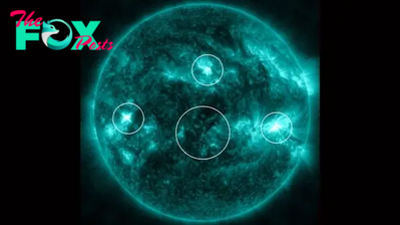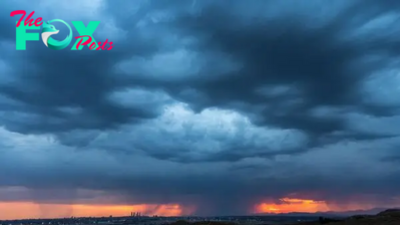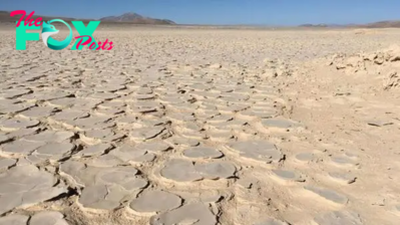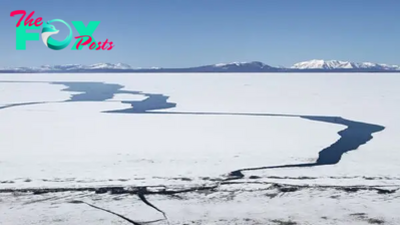Science
California-size Antarctic ice sheet once thought stable may actually be at tipping point for collapse
A gigantic ice sheet that was thought to be stable may be much closer to runaway melt than anyone realized, a new study has revealed.
The Wilkes Subglacial Basin — a California-size ice sheet in East Antarctica that holds enough ice to lift global sea levels by 10 feet (3 meters) — could be close to thawing at its base.
The discovery was made by scientists using radar surveys from planes flying over the sheet to peek at the ice underneath. If small temperature increases continue to accumulate beneath the sheet, the front edge could become unstuck and collapse. The researchers published their findings Jan. 19 in the journal Geophysical Research Letters.
Related: City-sized holes on Antarctica's ice shelves offer tantalizing 'window' into the frozen continent's underworld
"There hasn't been much analysis in this region — there's a huge volume of ice there, but it has been relatively stable," first author Eliza Dawson, a doctoral student in geophysics at Stanford University, said in a statement. "We're looking at the temperature at the base of the ice sheet for the first time and how close it is to potentially melting."
The Wilkes Subglacial Basin is a broad, down-sloping basin that extends 870 miles (1,400 kilometers) inland and contains ice that is 1.9 miles (3 km) thick. Emptying into the Southern Ocean through a handful of ice shelves and glaciers, the basin's ice sheet sits below sea level at its bottom, making the undersides of its glaciers susceptible to melting from inflows of warming seawater.
Scientists have long assumed that East Antarctica's ice is relatively stable (even gaining mass overall as of 2012) and had instead focused on studying West Antarctica's dramatically calving glaciers.

However, recent research has suggested that the 10 million-square-mile (27 million square kilometers) East Antarctic Ice Sheet underwent significant melting and retreat during previous warming periods, raising the possibility that the slumbering giant could awaken once more.
"This area has conditions that we could imagine changing," co-author Dustin Schroeder, an associate professor of geophysics at Stanford University, said in the statement. "And if warm ocean water gets there, it's going to 'turn on' a whole sector of Antarctica we don't normally think about as a contributor to sea level rise."
To investigate what could be going on beneath the sheet, the researchers collected data using radar surveys from planes that flew over it. As water is more reflective than bedrock, radio waves fired at thawed beds beneath ice sheets are reflected more than those that have remained frozen.
—Zoom through a 'spectacular' chain of ancient underwater volcanoes on Antarctic ocean floor
—Collapse of the West Antarctic ice sheet is 'unavoidable,' study finds
—'Ghost' of ancient river-carved landscape discovered beneath Antarctica
By analyzing the tangle of reflected radio signals before comparing them with others taken on the ground, the researchers were able to weave them into a map of the subglacial melt across thousands of miles of the basin's southern coastline.
They made an alarming discovery: There were large patches of thawed and frozen ground under the ice sheet, but most of the area could not be defined as either.
This could suggest that something about the ice sheet's geometry has shifted, or that there are complications in the data. Much more troublingly, it could also mean that most of the ground beneath the sheet is already semithawed, potentially moving it closer to a tipping point if temperatures at the base of the ice sheet increase.
"This suggests that glacial retreat could be possible in the future," Dawson said. "This part of East Antarctica has been largely overlooked, but we need to understand how it could evolve and become more unstable. What would need to happen to start seeing mass loss?"
-

 Science2d ago
Science2d agoEnormous explosion in 'Cigar Galaxy' reveals rare type of star never seen beyond the Milky Way
-

 Science2d ago
Science2d agoAn Animated Guide to the Rare 2024 Cicada Co-Emergence
-

 Science2d ago
Science2d agoHow Cloud Seeding Works and Why It’s Wrongly Blamed for Floods From Dubai to California
-

 Science3d ago
Science3d agoExplosive black hole flare from the center of our galaxy reconstructed from 'a single flickering pixel' using AI and Einstein's equations
-

 Science3d ago
Science3d ago4 solar flares simultaneously erupt from the sun in rare 'super' explosion — and Earth could be hit by the fallout
-

 Science3d ago
Science3d agoAn extra moon may be orbiting Earth — and scientists think they know exactly where it came from
-

 Science3d ago
Science3d agoAfter months of sending gibberish to NASA, Voyager 1 is finally making sense again
-

 Science3d ago
Science3d agoMassive heat wave and a supercell thunderstorm caused deadly, baseball-sized hailstones to rain down on Spain



























